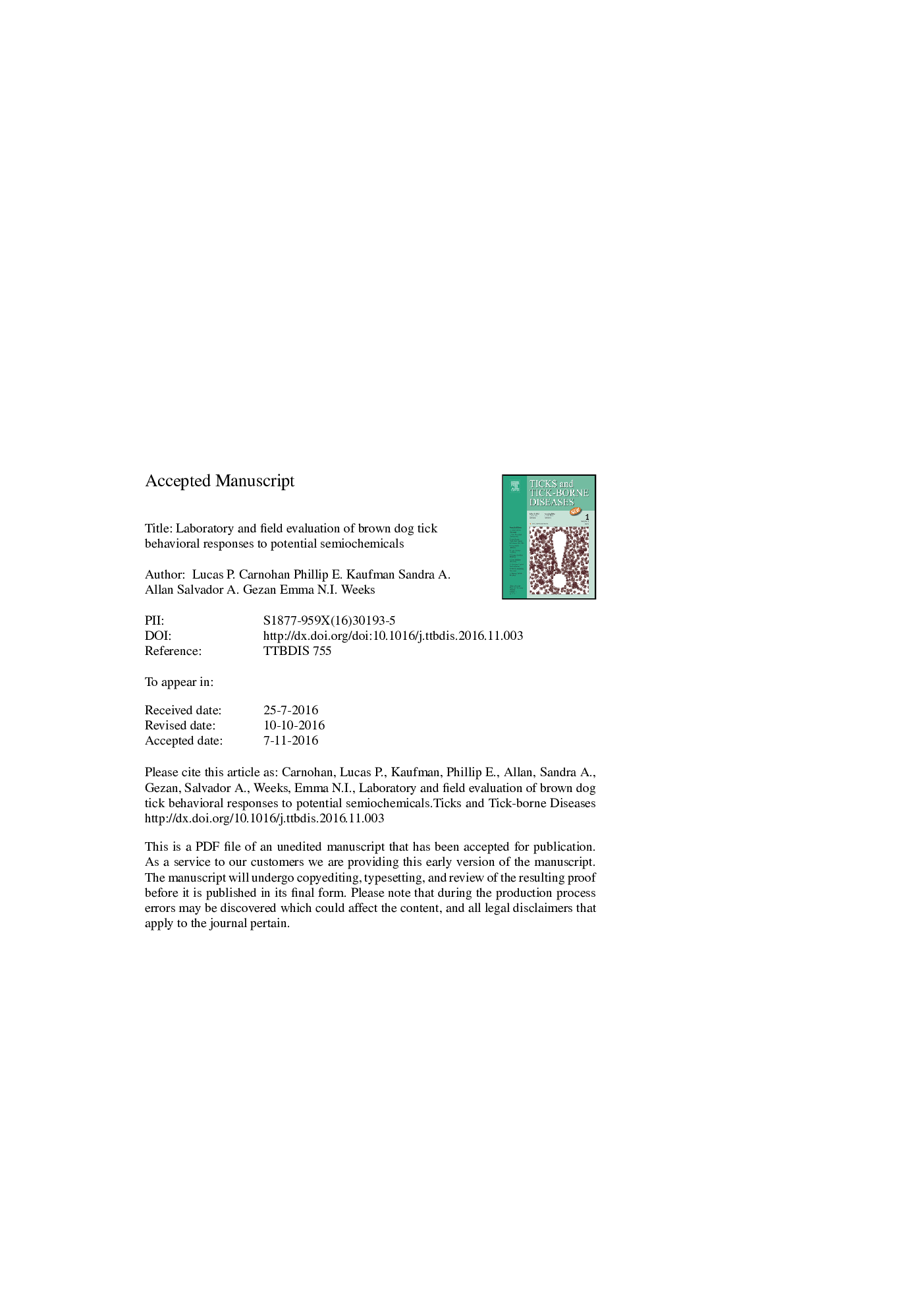| Article ID | Journal | Published Year | Pages | File Type |
|---|---|---|---|---|
| 5546471 | Ticks and Tick-borne Diseases | 2017 | 43 Pages |
Abstract
The brown dog tick, Rhipicephalus sanguineus sensu lato (Parasitiformis: Ixodidae), is an ectoparasite of dogs that can be found worldwide. This tick poses unique difficulties in management because it can complete its entire life cycle indoors and has demonstrated acaricide resistance. The ability to monitor for tick presence and abundance is necessary for developing effective control programs. As such, an evaluation of adult brown dog tick behavioral responses to 16 potential semiochemicals was undertaken using Y-tube and straight-tube olfactometers. Both sexes of ticks were activated by nine of the 16 semiochemicals tested, including 300 μg of 1-octen-3-ol, benzaldehyde, benzyl alcohol, hexanoic acid, nonanoic acid, methyl salicylate, o-nitrophenol, 2,6-dichlorophenol and salicylaldehyde. Rhipicephalus sanguineus s.l. behaviors including movement speed, direction and duration, as well as turning, were quantified following exposure to the same nine chemicals in a straight-tube olfactometer, individually at 300 μg and as mixtures. Three individual chemicals, 1-octen-3-ol, hexanoic acid, and methyl salicylate induced strong responses. These three chemicals were evaluated in a semi-field setting using a modified bed bug trap but were found to provide no significant increase in attraction compared with CO2 alone. The results of these studies provide a foundation for future research regarding semiochemicals of R. sanguineus s.l.
Related Topics
Life Sciences
Agricultural and Biological Sciences
Animal Science and Zoology
Authors
Lucas P. Carnohan, Phillip E. Kaufman, Sandra A. Allan, Salvador A. Gezan, Emma N.I. Weeks,
